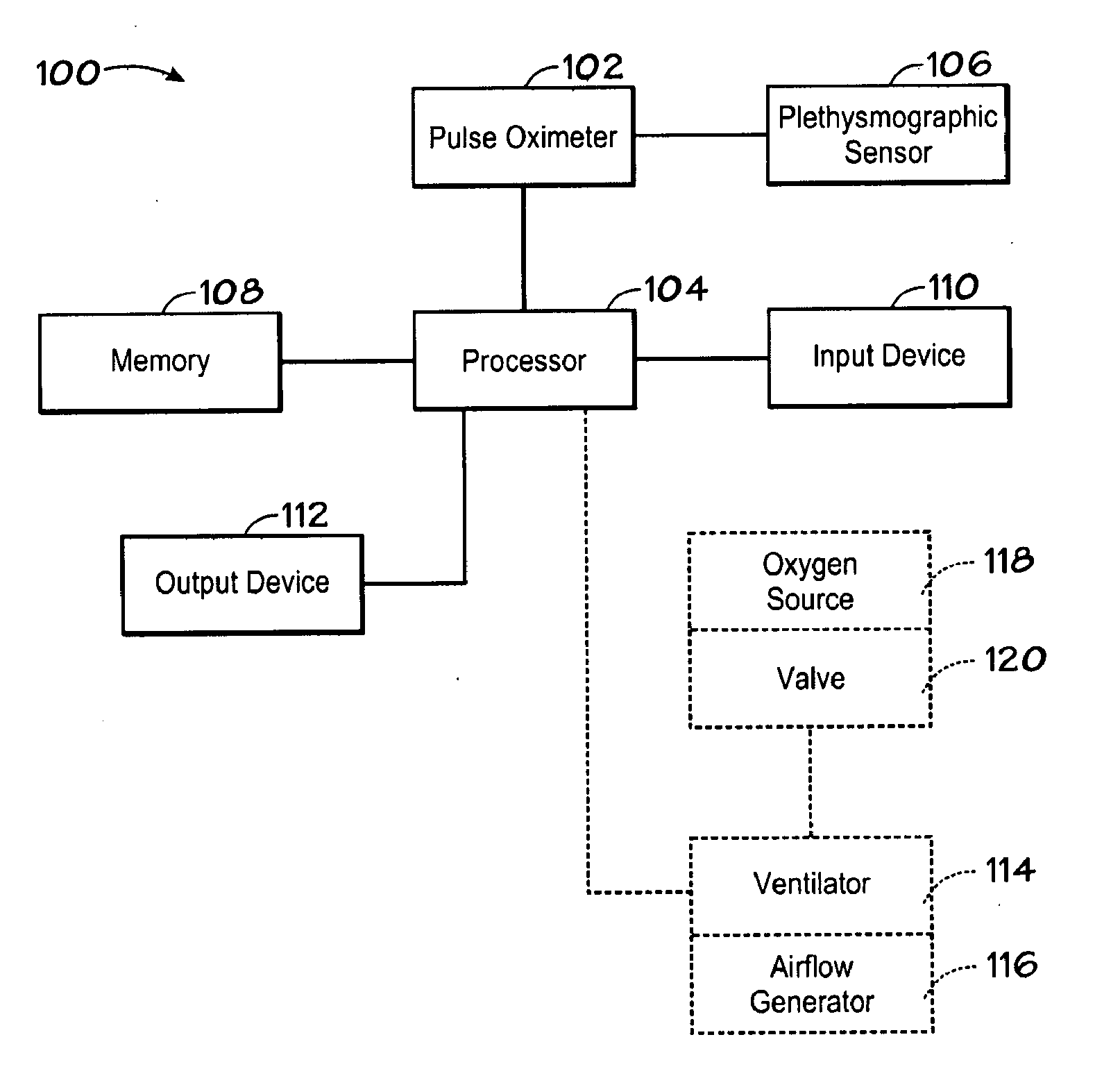Alarm Processor for Detection of Adverse Hemodynamic Effects of Cardiac Arrhythmia
a cardiac arrhythmia and hemodynamic technology, applied in the field of system and method for detecting and monitoring adverse disorders in clinical medicine, can solve the problems of unreliable systems for detecting the magnitude of respiratory variation in pulse pressure as a means for determining blood volume or venous return, potential problems for acute reduction of venous return, and significant increase in respiratory effort, so as to reduce venous return, increase intrathoracic pressure, and increase respiratory effort
- Summary
- Abstract
- Description
- Claims
- Application Information
AI Technical Summary
Benefits of technology
Problems solved by technology
Method used
Image
Examples
Embodiment Construction
[0006]An exemplary embodiment of the present invention detects a cardiovascular variation indicative of reduced venous return in timed relation to a maneuver in addition to or other than tidal breathing, which maneuver is known to reduce venous return, so that the timed relationship of the maneuver can be determined in relation to the induced cardiovascular variation to thereby better establish the presence of reduced venous return. An exemplary embodiment of the present invention comprises a venous return assessment system and method. Furthermore, exemplary embodiments of the present invention may comprise a system and method to identify a timed pattern of at least one fall in venous return to, for example, identify patients with more sustained patterns of blood pressure fall or with incomplete recovery after the fall. Accordingly, an exemplary reduced venous return detection system comprises a hemodynamic signal detector, such as a pulse oximeter, an input device for automatically...
PUM
 Login to View More
Login to View More Abstract
Description
Claims
Application Information
 Login to View More
Login to View More - R&D
- Intellectual Property
- Life Sciences
- Materials
- Tech Scout
- Unparalleled Data Quality
- Higher Quality Content
- 60% Fewer Hallucinations
Browse by: Latest US Patents, China's latest patents, Technical Efficacy Thesaurus, Application Domain, Technology Topic, Popular Technical Reports.
© 2025 PatSnap. All rights reserved.Legal|Privacy policy|Modern Slavery Act Transparency Statement|Sitemap|About US| Contact US: help@patsnap.com



